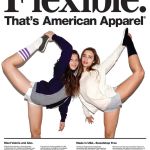
Female masturbation is coming back
"Stimulation pockets" make their debut on the catwalk
April 5th, 2024
From the stiletto heels of Louboutin to the tight miniskirts of Gucci, and through the push-up bras of Victoria's Secret: for a long time, fashion has been a tool of seduction aimed at pleasing the male gaze. John Berger, author of the bestseller G., perfectly articulates this concept in the second chapter of his book Ways of Seeing (1972), where he delves into the male perspective and its implications for the portrayal of women in art and media. Berger analyzes how Western art has historically depicted women as objects of desire, often portrayed nude or semi-nude for the viewer's pleasure. Portrayed as passive subjects, reduced to mere objects of male fantasy, this modus operandi has been abused in advertising and mass media, further reinforcing harmful stereotypes and unrealistic beauty ideals. In recent years, designers, musicians, photographers, and image creators (especially women) have managed to overturn the narrative around the female figure, a gradual process culminating in recent runways of Courrèges and Di Petsa, where female pleasure not only had its revenge but took center stage.
Controversial Campaigns on Female Pleasure
The controversial campaigns of Tom Ford in the 2000s revolved around a sexualized view of female pleasure, at the peak of the motto "sex sells". Under his artistic direction, a famous advertisement showcased a model with pubic hair shaved into the shape of the maison's logo, later removed in 2003. Ford also collaborated with Terry Richardson to create the campaign for the eponymous men's fragrance in 2007, featuring only the body of a nude model, portrayed with fingers close to the genitals and a strategically positioned bottle barely covering them. Years later, American Apparel advertisements from the early 2000s became notorious for images of girls depicted in sexually suggestive situations. During his photoshoots, Dov Charney, the founder of AA, worked closely with Terry Richardson on various campaigns, notably the controversial 2006 series where a model in tights masturbates on a bed. These images undoubtedly made fashion history but also perpetuated gender stereotypes and contributed to the objectification of women, reducing them to mere tools to sell clothes or products.
Designers and Musicians Changing the Narrative on Female Sexuality

To subvert the narrative, Mugler and Jean Paul Gaultier have successfully spread the message that women can be sexy without needing a man to look at them, only society at large. Brands like Diesel, Simone Rocha, or Luis De Javier have followed suit by incorporating elements of fetishism and sensuality into their collections, while new entities like Namilia and Miaou have redefined empowerment in a punk context. This change is supported by social movements like #MeToo, which have brought themes of power and consent to the forefront of public debate, challenging the idea that provocative clothing justifies sexual harassment. Music has also contributed to this narrative, with songs like "WAP" by Cardi B and Megan Thee Stallion or "Hentai" by Rosalía challenging the status quo by focusing on female sexual pleasure rather than male satisfaction. Like them, countless female artists speak openly about their sexuality, such as Bad Gyal, Anitta or Karol G. Fashion, as part of the social and cultural construct, is not excluded from these substantial changes, and Calvin Klein's SS16 campaign is one of the best examples of this: photographed by new talents Harley Weir and Tyrone Lebon, the series: "I ___ in #mycalvins" asked celebrities to bare their bodies while wearing Calvin Klein underwear. In one of the images, we can see Abbey Lee Kershaw pictured with her hand in her briefs and a text that reads, 'I pulse in #mycalvins'. This image, like the rest of the series, is not about the exploitation of the female body, but rather the representation of women having the opportunity to represent themselves as they wish and taking control of their sexual pleasure.
Stimulation pockets
In Di Felice's FW24 for Courrèges, pockets became a window to the orgasm, strategically placed at the front and centre of skirts and trench coats. For the presentation, a moving catwalk was designed to make the floor 'breathe' in harmony with the rhythm of the models who walked the runway and occasionally let escape sighs that suggested ecstasy. In London, Dimitra Petsa surprised the public with her 'stimulation pockets': in a video posted on her Instagram profile, models showed fingers slipping into triangular panels strategically placed between jeans and skin. The pocket designed by Di Petsa also takes the shape of a triangle above the genital area. According to the brand, this technique, kept secret for years, is a tribute by the brand's founder, Dimitra, to female empowerment through her designs. The interesting aspect of the masturbation pockets is that they are 'selling sex' like the controversial campaigns of the 2000s, but at the same time they shift the conversation to female sexual pleasure by removing the male gaze from the perspective of dynamics. It is an exploration, a discovery, a celebration of one's individual sexuality.

















































































